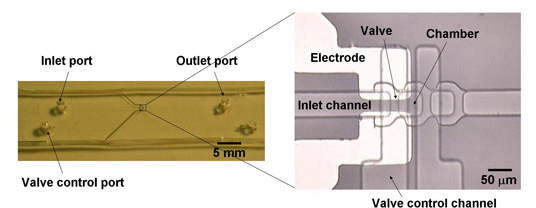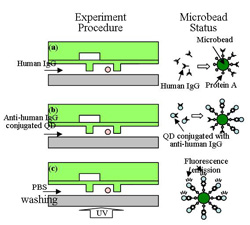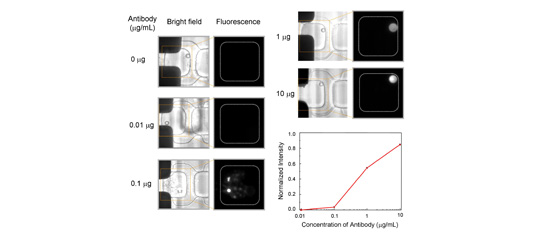
About
QD-based detection has attracted research attention because of its numerous advantages such as high sensitivity, narrow emission bandwidth,
long-term photostability and tunable multi-color imaging compared to conventional organic dyes. We propose a microbead-based assay for
adaptive antibody detection by using a microfluidic chip designed to manipulate single microbead.
Fabricated Device
Pictures of the fabricated device:

Experimental Procedure
This picture shows the experimental procedures. First, microbeads are introduced from the inlet and autonomously captured into micro-chamber as was described previously. We have used streptavidin-coated polystyrene beads with a diameter of 10 μm.
These microbeads are coated with biotinylated protein A for the specific binding with human IgG antibody.
After the beads are captured, human IgG antibodies in different concentration are injected into specific target micro-wells.

Fluorescence Photo Image
This picture shows the the fluorescence photo image of QD-attached (namely, specifically reacted with human IgG) microbeads and the measured intensity of fluorescence for various antibody concentrations.





